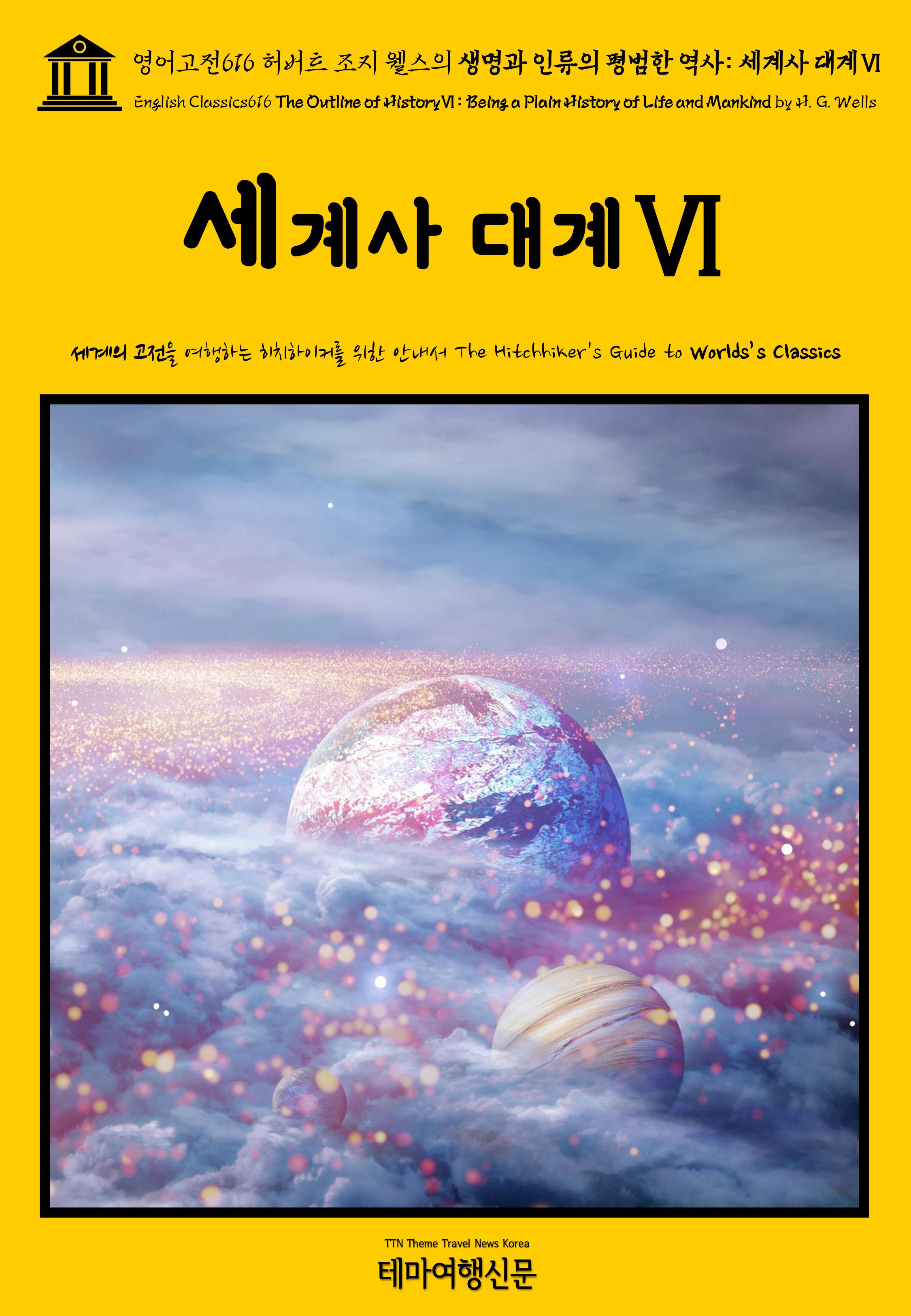▶ 인류의 모든 이야기(The Whole Story of Man) 또는 생명과 인류의 평범한 역사가 되는 것(Being a Plain History of Life and Mankind) : 세계사 대계(The Outline of History)(1920)는 허버트 조지 웰스(H. G. Wells)(1866~1946)의 역사서(history book)입니다. 웰스는 소설가이기 이전에 당대의 지식인이자 역사가, 그리고 교육에 관심이 많은 작가로써 1919년부터 지구의 기원(The origins of the Earth)부터 웰스가 직접 경험한 제1차 세계 대전(The Great War)(1914~1918)까지 세계역사를 연대기별로 일목요연하게 정리해 격주로 연재하기 시작하였습니다. 1920년 연재한 원고를 세계사 대계(The Outline of History)(1920)란 이름의 단행본으로 출간하였으며, 영국을 비롯한 세계 각지에 번역 출간될 정도로 큰 인기를 끌었습니다.
현재까지 최소 200만부 이상이 판매되었으며, 당대 영국 고등 교육기관에서 역사 교육을 위한 필독서로 사랑받았습니다. 또한 조지 웰스는 세계 각지의 오류에 대한 지적을 겸허히 수용하였고, 1937년까지 자신이 직업 원고를 수정하여 개정판을 발간하였습니다. 원고의 완성도 못지않게 당대 유럽인의 우생학과 제국주의에 대한 지지에도 불구하고, 인종주의와 문명적 우월성을 주장하는 이론(theories of racial and civilizational superiority)을 비판한 대목은 현대의 독자에게도 눈여겨볼 만합니다.
▶ THE RACES OF MANKIND. In the early Neolithic Period in Europe?it may be 10,000 or 12,000 years ago or so?man was differentiating all over the world, and he had already differentiated into a number of varieties, but he has never differentiated into different species. A “species,” we must remember, in biological language is distinguished from a “variety” by the fact that varieties can interbreed, while species either do not do so or produce offspring which, like mules, are sterile. All mankind can interbreed freely, can learn to understand the same speech, can adapt itself to co-operation.
인류의 종(種). 10,000~12,000년 전쯤으로 추정되는 유럽의 초기 신석기 시대에 인간은 전 세계적으로 분화하고 있었고 이미 많은 변종으로 분화했지만 다른 종으로 분화한 적은 한 번도 없습니다. 생물학적 언어에서 "종"은 품종이 서로 교배할 수 있는 반면 종은 그렇게 하지 않거나 노새처럼 불임의 자손을 낳는다는 사실에 의해 "다양성"과 구별된다는 사실을 기억해야 합니다. 모든 인류는 자유롭게 교배할 수 있고 같은 말을 이해하는 법을 배울 수 있으며 협력에 적응할 수 있습니다.
▶ 그가 사망한 이후에는 영국 편집자 레이몬드 포스트게이트(Raymond Postgate)(1896~1971)가 제2차 세계 대전(Second World War, WWII)(1939~1945)을 추가하고, 작가의 아들 G. P. 웰스(G. P. Wells)(1901~1985)가 선사시대에 대한 최신 이론을 추가하는 등 지속적으로 업데이트하였습니다. 테마여행신문 TTN Korea 영어고전(English Classics)과 함께 어제도, 오늘도, 내일도 멋진 문학여행을! B
▶ THE BEGINNINGS, THE RISE, AND THE DIVISIONS OF CHRISTIANITY. BEFORE we can understand the qualities of Christianity, which must now play a large part in our history, and which opened men’s eyes to fresh aspects of the possibility of a unified world, we must go back some centuries and tell of the condition of affairs in Palestine and Syria, in which countries Christianity arose. We have already told in Chapter XXI the main facts about the origin of the Jewish nation and tradition, about the Diaspora, about the fundamentally scattered nature of Jewry even from the beginning, and the gradual development of the idea of one just God ruling the earth and bound by a special promise to preserve and bring to honour the Jewish people. The Jewish idea was and is a curious combination of theological breadth and an intense racial patriotism. The Jews looked for a special saviour, a Messiah, who was to redeem mankind by the agreeable process of restoring the fabulous glories of David and Solomon, and bringing the whole world at last under the benevolent but firm Jewish heel.
기독교의 시작, 부상, 분열. 이제 우리 역사에서 많은 부분을 차지해야 하고 통일 세계의 가능성에 대한 새로운 측면에 대해 사람들의 눈을 열어준 기독교의 특성을 이해하기 전에, 우리는 몇 세기 전으로 돌아가 그 시대의 상황을 이야기해야 합니다. 팔레스타인과 시리아, 기독교가 발생한 국가. 우리는 이미 21장에서 유대 민족과 전통의 기원, 디아스포라, 태초부터 유대인의 근본적으로 흩어져 있는 본성, 그리고 한 분 하나님이 땅을 통치하신다는 사상의 점진적인 발전에 대한 주요 사실을 이야기했습니다. 그리고 유대 민족을 보존하고 영예롭게 하겠다는 특별한 약속으로 묶여 있습니다. 유대교 사상은 신학적 폭과 강렬한 인종적 애국심의 기묘한 조합이었고 지금도 그렇습니다. 유대인들은 다윗과 솔로몬의 놀라운 영광을 원만하게 회복하고 마침내 온 세상을 자비로우나 확고한 유대인의 발 아래 두는 즐거운 과정을 통해 인류를 구속할 특별한 구세주 메시아를 찾았습니다.
▶ SEVEN CENTURIES IN ASIA (CIRCA 50 B.C. TO A.D. 650). IN the preceding two chapters we have concentrated our attention chiefly on the collapse in the comparatively short space of four centuries of the political and social order of the western part of the great Roman Empire of Cæsar and Trajan. We have dwelt upon the completeness of that collapse. To any intelligent and public-spirited mind living in the time and under the circumstances of St. Benedict or Cassiodorus, it must have seemed, indeed, as if the light of civilization was waning and near extinction. But with the longer views a study of universal history gives us, we can view those centuries of shadow as a phase, and probably a necessary phase, in the onward march of social and political ideas and understandings. And if, during that time, a dark sense of calamity rested upon Western Europe, we must remember that over large portions of the world there was no retrogression.
아시아의 7세기(기원전 50년~서기 650년). 앞의 두 장에서 우리는 주로 카이사르와 트라야누스의 위대한 로마 제국 서부의 정치적, 사회적 질서가 비교적 짧은 4세기 동안 무너지는 데 집중했습니다. 우리는 그 붕괴의 완전성에 대해 숙고했습니다. 성 베네딕트(St. Benedict)나 카시오도루스(Cassiodorus)의 시대와 상황에 살고 있는 지적이고 대중적인 정신이 있는 사람이라면 문명의 빛이 약해지고 거의 소멸되는 것처럼 보였을 것입니다. 그러나 보편 역사에 대한 연구가 우리에게 주는 더 긴 관점을 통해 우리는 수세기 동안의 그림자를 사회적, 정치적 아이디어와 이해의 전진 행진에서 한 단계, 아마도 필요한 단계로 볼 수 있습니다. 그리고 그 기간 동안 서유럽에 어두운 재앙이 닥쳤다면 우리는 세계의 많은 부분에서 역행이 없었다는 것을 기억해야 합니다.






